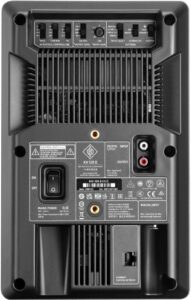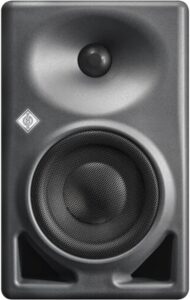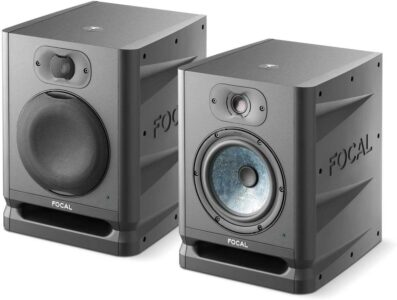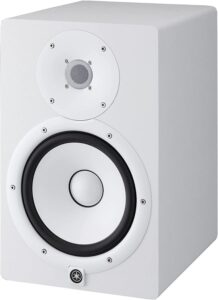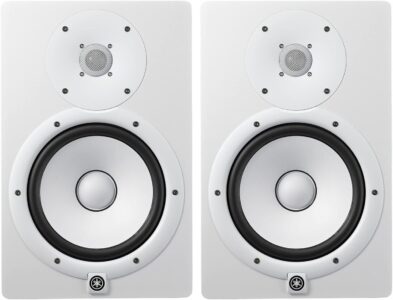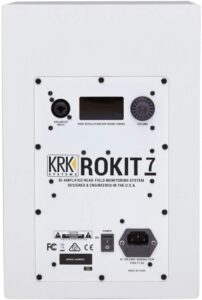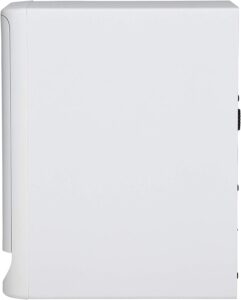Types of Studio Monitors
Passive Monitors
These monitors are non-powered, which means they require an external amplifier to function. Their main advantage is the flexibility they offer. You can choose and change amplifiers as needed, allowing you to tailor the sound to your liking. On the flip side, they do require a separate investment in an amplifier and appropriate cabling.
Powered Monitors
Also known as “active monitors,” these come with built-in amplifiers, streamlining your setup by eliminating the need for external power sources. They’re designed in a way that the speakers and amplifier work in harmony, often resulting in optimized sound performance. The Genelec 8030C is a fine example of an active monitor that provides crisp sound delivery.
Active Monitors (DSP Monitors)
These are a subset of powered monitors but come with advanced signal processing capabilities, such as equalization or room correction. Their digital enhancements make them adaptable to various room environments, making them versatile for a plethora of studio shapes and sizes.
The Significance of Size & Room Acoustics
Room Dynamics: Tailoring the monitor size to the room is critical. A compact space can benefit from a monitor with a 5-inch woofer, whereas more spacious areas would need something larger, like an 8-inch woofer.
Acoustic Treatment: Sound reflections can be your worst enemy, introducing distortions. Ensure you’ve got quality acoustic panels, diffusers, and bass traps. Products like Dynaudio LYD-7 perform exceptionally well in well-treated spaces.
Delving into Frequency Response
Range Importance: A wider frequency response, like that of the Neumann KH 120, provides a more comprehensive sound representation, ensuring you don’t miss any details.
The Quest for Flatness: You want your tracks raw and uncolored. Monitors that offer a flat response won’t amplify or suppress any frequency, allowing for genuine sound reproduction.
Power, Clarity, and Amplification
Strength in Watts: A monitor’s wattage determines its loudness potential. Powerful monitors maintain sound clarity even at elevated volumes. This trait can be observed in the robust Focal Alpha 65.
Amplification Needs: While active monitors eliminate the need for external amplification, passive ones provide an avenue for customized sound, depending on your choice of amplifier.
Connectivity, Flexibility, and Adjustability
Diverse Inputs: Compatibility with your existing equipment is paramount. Check for XLR, TRS, and RCA input options, ensuring a seamless connection.
Tuning to Perfection: Tailor the sound based on your room’s acoustics. Products like the ADAM Audio A7V come with tuning options, allowing for optimal sound performance irrespective of the setting.
A Peek into Build & Design
Sturdy Cabinets: Dense materials, like MDF, are preferred for cabinet construction. They reduce unwanted resonances, paving the way for cleaner sound reproduction.
Port Positioning: Front-firing or rear-firing ports can significantly impact bass response. Your choice can be influenced by room size and monitor placement.
Deciphering Budget, Brands, and Value
Cost Versus Quality: A higher price doesn’t always guarantee superiority. Sometimes, monitors like KRK Rokit 5 G4 can deliver top-notch performance without breaking the bank.
Brand Legacy: Established names, such as Yamaha, bring reliability to the table. Yet, emerging names are also infusing innovation into the market.
Support and Assurance: A comprehensive warranty speaks volumes about a product’s durability and the brand’s confidence.









